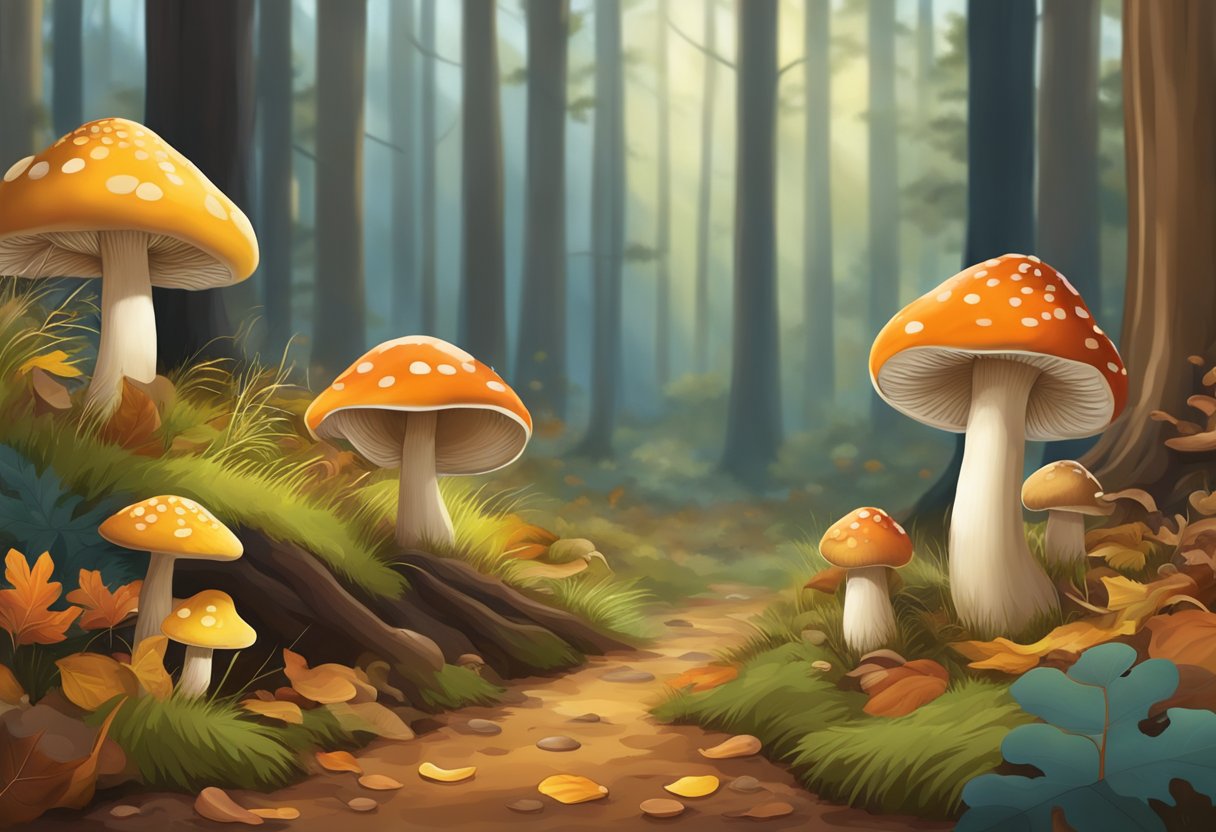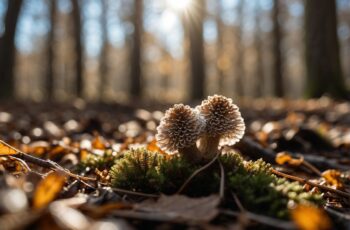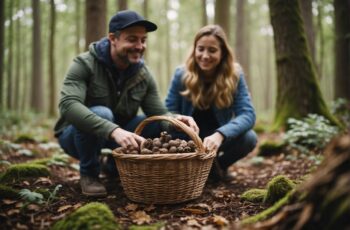Mushrooms, with their vast array of flavors and textures, play an essential role in culinary arts and ecosystems alike. Each species of mushroom has a specific season when it thrives, aligning with changes in weather patterns and other environmental factors. Enthusiasts revel in the pursuit of mushrooms like the esteemed morel, which is celebrated for its unique shape and rich, earthy flavor that can elevate a variety of dishes.

Identifying and harvesting wild mushrooms require both skill and knowledge, ensuring the safety and success of foraging endeavors. A comprehensive understanding of mushroom varieties is invaluable, as is learning the method of finding and identifying wild mushrooms, which can significantly enhance the foraging experience. As mushrooms vary widely in taste and nutritional profiles, incorporating them into recipes not only offers health benefits but also provides a gastronomic adventure.
Key Takeaways
- Different mushrooms are best harvested in their respective seasons.
- Knowledge of varieties and identification is crucial for foraging.
- Mushrooms are versatile in cooking and offer nutritional benefits.
Mushroom Varieties and Nutritional Profiles
This section explores the diversity of edible mushrooms and their significant nutritional contributions to a balanced diet.
Identifying Edible Mushrooms
Differentiating between edible and potentially hazardous mushrooms is crucial for foragers and enthusiasts. For example, Ohio boasts a rich variety of edible mushrooms, which can be safely enjoyed when properly identified. It is essential to have a thorough understanding of mushroom characteristics, as misidentification can lead to serious health risks.
Nutritional Benefits of Common Mushrooms
Mushrooms are not only versatile in the kitchen but also offer a range of nutritional benefits. Shiitake mushrooms, for instance, are known for their content of vitamins and minerals.
- Shiitake: Rich in iron and B vitamins, shiitake mushrooms contribute to a healthy immune system and energy production.
- Cremini: These mushrooms are packed with potassium and protein, supporting muscle and nerve function.
- Portobello: As full-sized cremini, these mushrooms provide similar nutrients but in larger quantities due to their size.
- Oyster: Low in calories, these mushrooms contain fiber and protein, contributing to satiety and digestive health.
Incorporating a variety of mushrooms into the diet can contribute to an intake of essential nutrients, such as vitamin A and iron, supporting overall well-being.
Cooking Techniques for Mushrooms
In cooking mushrooms, techniques vary to achieve the desired texture and flavor. The choice of fat, such as oil or butter, the application of heat, and the incorporation of seasonings all play pivotal roles in mushroom preparation.
Sautéing Mushrooms Perfectly
To sauté mushrooms, one begins by heating oil or butter in a skillet over medium-high heat. It’s crucial to leave space between the mushrooms to avoid steaming. They should be cooked for 3-5 minutes before stirring, which allows for adequate browning. A touch of garlic can be added for flavor, however one must be careful as garlic burns easily on high heat. Consistent stirring thereafter ensures an even cook and enhances the texture.
Roasting Mushrooms
When roasting mushrooms, tossing them with olive oil and seasoning before spreading them out on a baking sheet is key. They should roast in a preheated oven at a high temperature, which leads to deep browning and rich flavor development. This technique accentuates the umami quality mushrooms are known for.
Mushroom Preparation Tips
Before cooking, mushrooms require proper preparation. They should be cleaned gently with a paper towel or a brush to remove any debris. Slicing or leaving them whole can impact texture and is determined by the intended use. To season mushrooms, one can incorporate salt, pepper, or other preferred herbs after they begin to release their moisture to ensure the spices adhere well. When cooked correctly, mushrooms exhibit a tender interior and a golden exterior with enhanced flavor.
Mushroom-Based Recipes and Pairings
Mushrooms offer an earthy flavor that enhances a variety of dishes, from hearty entrees to delicate side dishes. They pair well with aromatic herbs and can be a standout ingredient in risottos, pastas, and as an accompaniment to various proteins.
Signature Mushroom Dishes
Mushroom Risotto: Utilizing Arborio rice, simmered in a rich stock, risotto becomes a canvas for mushrooms. One can stir in varieties like cremini or porcini mushrooms, accented with herbs such as rosemary and thyme for depth of flavor. The addition of Parmesan cheese and a touch of lemon zest brightens the dish.
Mushroom Pasta: A classic mushroom pasta recipe involves a blend of sautéed mushrooms, garlic butter, and fresh parsley. Specialty pastas like tagliatelle or pappardelle work exceptionally well to catch the creamy sauce and mushroom slices.
Side Dishes and Accompaniments
- Roasted Mushrooms with Garlic Butter: Perfect as a side dish, mushrooms are tossed with melted garlic butter and a sprinkle of thyme and rosemary, roasted until golden.
- Asparagus and Mushroom Sauté: This is a vibrant side dish where asparagus and mushrooms are sautéed with garlic and finished with a squeeze of lemon.
Innovative Mushroom Pairings
With Proteins: Mushrooms enhance the rich flavors of steak, pork, and chicken. A mushroom sauce, featuring copious amounts of sautéed mushrooms and creamy garlic butter, serves as an excellent topping for grilled meats.
With Eggs: For a breakfast or brunch option, incorporating mushrooms into an omelette or as a topping for a frittata adds a savory note. The inclusion of herbs like parsley intertwines with the umami of the mushrooms and the richness of the eggs.
Seafood: Unique yet delicious, mushrooms can complement seafood dishes. Adding sliced mushrooms to a seafood stew or serving them alongside a seared scallop dish can introduce depth and a new flavor spectrum.
Storing and Preserving Mushrooms
Proper storage and preservation are key to maintaining the quality and extending the shelf life of mushrooms.
Best Practices for Storage
When storing fresh mushrooms, it’s important to keep them dry and cool. Place whole, unwashed mushrooms in a brown paper bag or wrap them in paper towels to absorb moisture, and store them in the refrigerator. This helps maintain their texture and prevents spoilage. Sliced mushrooms should be stored in an airtight container and consumed within a few days to ensure freshness.
Extending Shelf Life
To extend the shelf life of mushrooms, avoid cleaning them until you’re ready to use them. For longer-term storage, mushrooms can be sautéed in oil or butter before freezing, which allows them to keep for several months. Regularly check for any signs of spoilage and remove any affected mushrooms to prevent it from spreading.
Freezing and Drying Techniques
Freezing mushrooms is a convenient way to preserve their flavor for future use. Blanch or sauté mushrooms before freezing to help retain their texture and quality. Drying mushrooms is another effective preservation method, especially for varieties like morels. They can be air-dried or dehydrated and then stored properly to be reconstituted and enjoyed at a later date.
Frequently Asked Questions
This section addresses common queries about mushroom foraging, focusing on regions and timings that are essential for enthusiasts.
What types of mushrooms can be found in Oregon and when?
Oregon is home to a variety of mushrooms, including the prized chanterelle mushrooms, which are abundant during the late summer to fall months. Morels, another sought-after variety, typically emerge in the spring.
How do the seasons affect mushroom availability?
Mushroom growth is heavily influenced by the seasons, as they provide the necessary climate conditions for different species to thrive. For instance, warmer spring temperatures and moisture encourage the growth of morel mushrooms.
What is the peak season for morel mushroom hunting?
The peak season for searching for morel mushrooms generally spans from late March to May, although this can vary based on geographical location and environmental factors.
Are there ideal times of day for foraging mushrooms?
Dawn or just after rainfall are often considered the best times for mushroom foraging, as these conditions help mushrooms emerge and become more visible.
In which months is mushroom foraging most fruitful in the Pacific Northwest?
In the Pacific Northwest, particularly Oregon and Washington, mushroom foraging is most productive from late summer through late fall, aligning with the chanterelle and porcini seasons.
What factors determine the end of mushroom season?
The close of mushroom season is usually brought on by cold weather and frost, which inhibit mushroom growth and make foraging less fruitful, as outlined in a comprehensive mushroom season chart.


